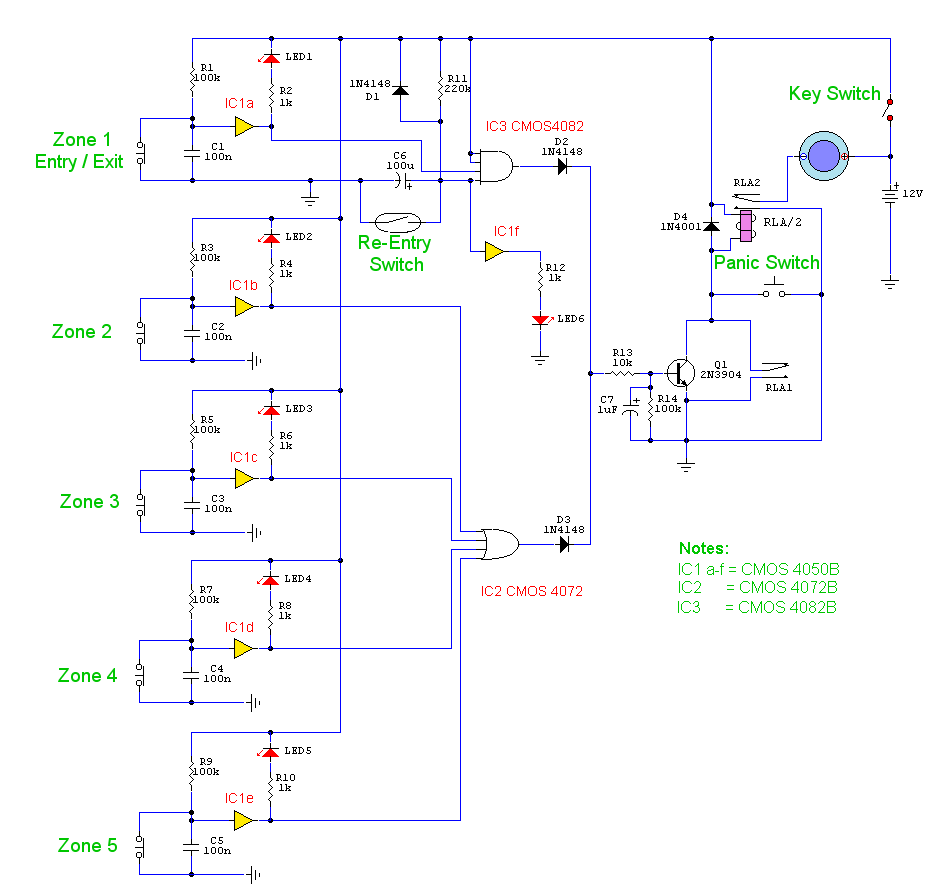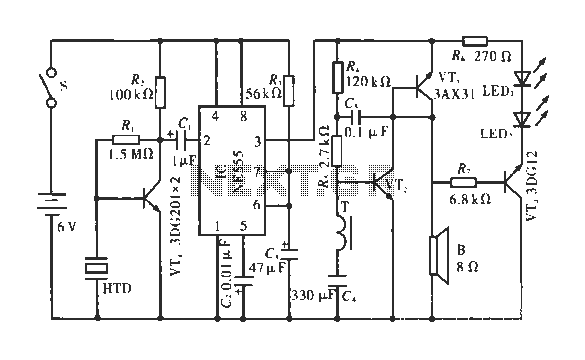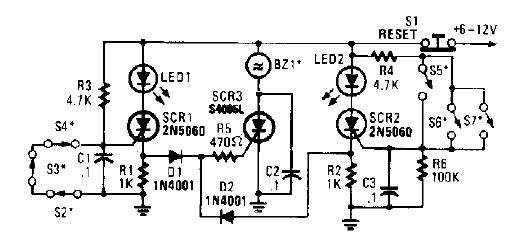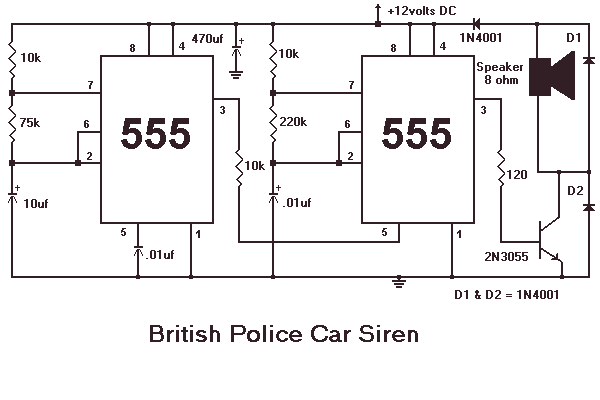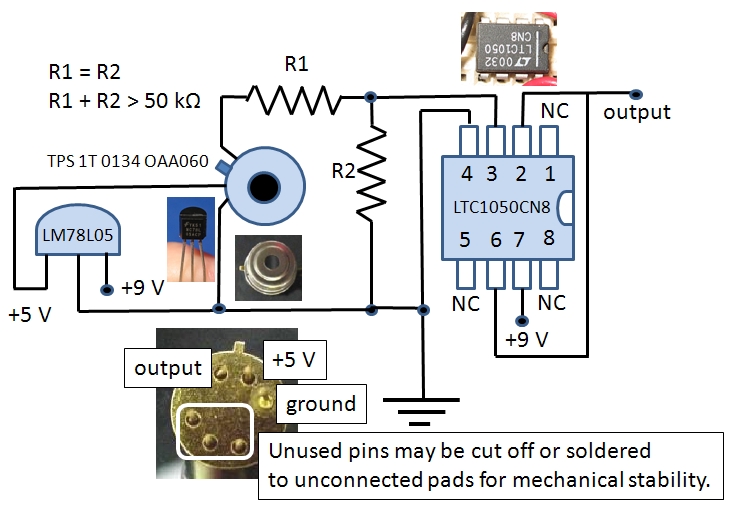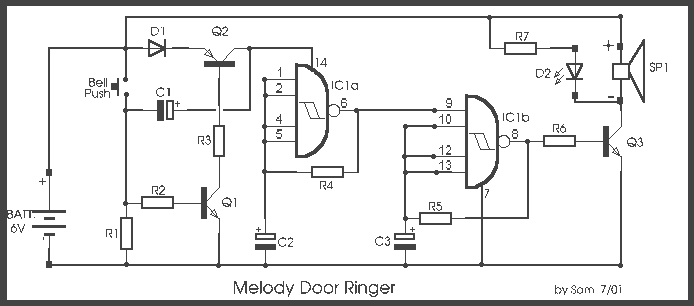
FM modulation circuit diagram using ceramic resonator
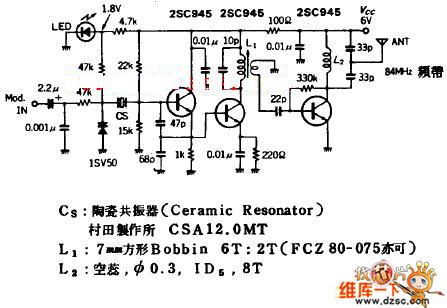
The quartz crystal oscillator circuit is highly advantageous in terms of frequency stability. Even the Voltage-Controlled Crystal Oscillator (VCXO) circuit, which allows for significant frequency changes, typically experiences only about a 1% variation. However, the linear range of control voltage to frequency variation is relatively narrow. Although the Q value of ceramic resonators is lower than that of quartz crystal oscillators, the inductive range is still considerable.
The quartz crystal oscillator is a crucial component in various electronic applications due to its exceptional frequency stability and precision. It operates based on the piezoelectric effect, where mechanical stress applied to the crystal generates an electrical signal. The fundamental frequency of oscillation is determined by the physical dimensions and material properties of the quartz crystal.
In a typical quartz crystal oscillator circuit, the crystal is connected in a feedback loop with an amplifier, often configured as a Colpitts or Clapp oscillator. The circuit maintains oscillation by ensuring that the gain around the loop is equal to or greater than one, with the crystal providing the necessary frequency-selective feedback. The frequency of oscillation is primarily determined by the crystal's resonant frequency, which can be influenced by temperature, mechanical stress, and aging.
When discussing VCXO circuits, it is essential to note that they are designed to allow for frequency modulation by applying a control voltage. The frequency shift in a VCXO is typically limited to about 1%, which is advantageous for applications requiring minor adjustments to maintain synchronization with other signals. However, the linearity of the frequency response to control voltage can be limited, necessitating careful design to ensure that the desired frequency range is achievable without introducing significant distortion or instability.
Ceramic resonators, while offering lower Q values than quartz crystals, can still be utilized effectively in applications where cost and size are critical factors. They provide a broader inductive range, which can be beneficial in certain circuit designs. However, their frequency stability and precision are generally inferior to that of quartz crystal oscillators, making them less suitable for high-precision applications.
In conclusion, the choice between quartz crystal oscillators and ceramic resonators depends on the specific requirements of the application, including the need for frequency stability, cost, size, and the acceptable range of frequency variation.On frequency stability, the quartz crystal oscillator circuit is very advantageous, even the the VCXO circuit with large amount of frequency changing only changes about 1%, and the linear range of control voltage to frequency variation is not wide. Although the ceramic resonator Q value is lower than the quartz crystal oscillator, the inductive range is re..
🔗 External reference
The quartz crystal oscillator is a crucial component in various electronic applications due to its exceptional frequency stability and precision. It operates based on the piezoelectric effect, where mechanical stress applied to the crystal generates an electrical signal. The fundamental frequency of oscillation is determined by the physical dimensions and material properties of the quartz crystal.
In a typical quartz crystal oscillator circuit, the crystal is connected in a feedback loop with an amplifier, often configured as a Colpitts or Clapp oscillator. The circuit maintains oscillation by ensuring that the gain around the loop is equal to or greater than one, with the crystal providing the necessary frequency-selective feedback. The frequency of oscillation is primarily determined by the crystal's resonant frequency, which can be influenced by temperature, mechanical stress, and aging.
When discussing VCXO circuits, it is essential to note that they are designed to allow for frequency modulation by applying a control voltage. The frequency shift in a VCXO is typically limited to about 1%, which is advantageous for applications requiring minor adjustments to maintain synchronization with other signals. However, the linearity of the frequency response to control voltage can be limited, necessitating careful design to ensure that the desired frequency range is achievable without introducing significant distortion or instability.
Ceramic resonators, while offering lower Q values than quartz crystals, can still be utilized effectively in applications where cost and size are critical factors. They provide a broader inductive range, which can be beneficial in certain circuit designs. However, their frequency stability and precision are generally inferior to that of quartz crystal oscillators, making them less suitable for high-precision applications.
In conclusion, the choice between quartz crystal oscillators and ceramic resonators depends on the specific requirements of the application, including the need for frequency stability, cost, size, and the acceptable range of frequency variation.On frequency stability, the quartz crystal oscillator circuit is very advantageous, even the the VCXO circuit with large amount of frequency changing only changes about 1%, and the linear range of control voltage to frequency variation is not wide. Although the ceramic resonator Q value is lower than the quartz crystal oscillator, the inductive range is re..
🔗 External reference
